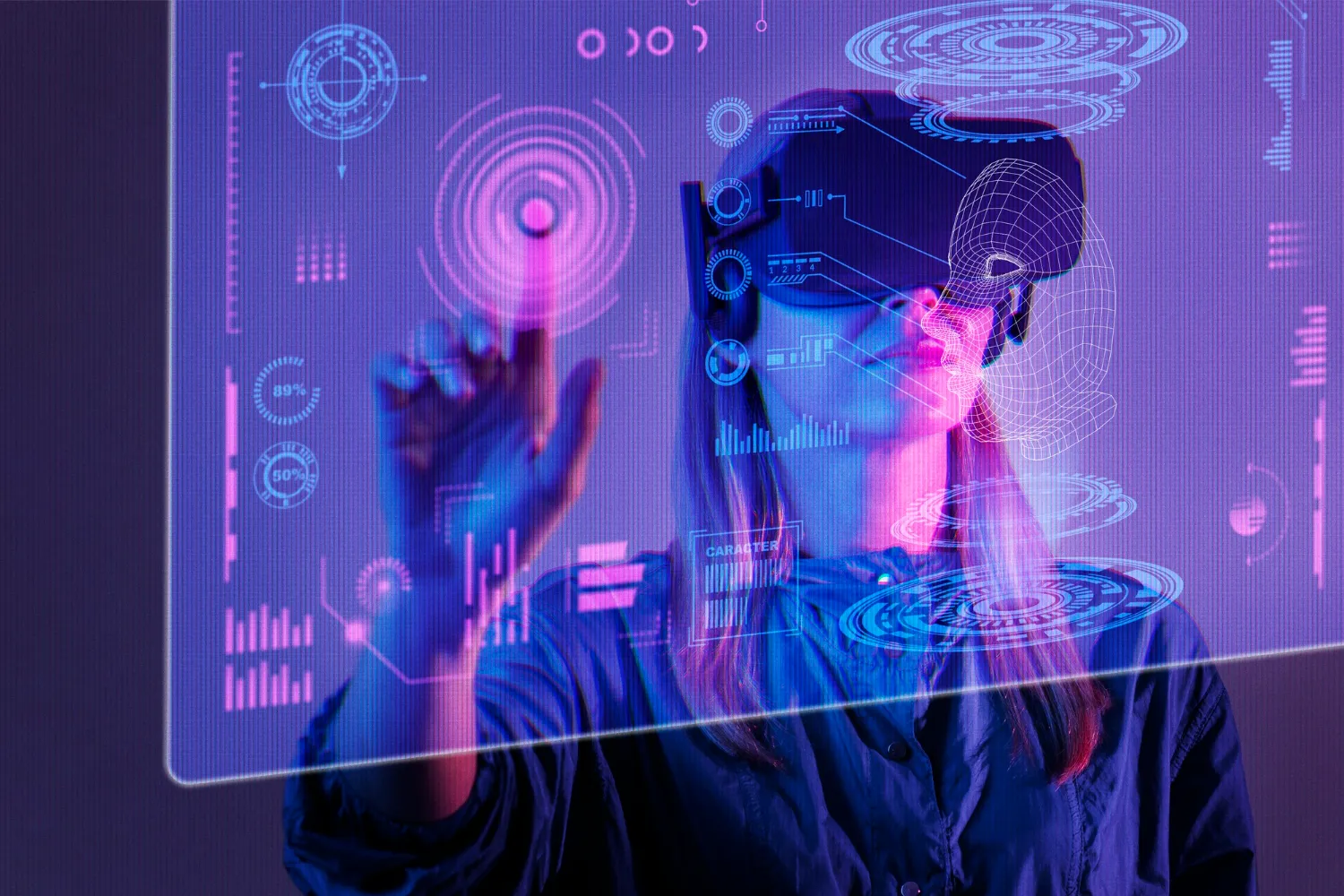Augmented Reality (AR) and the Future of Mobile App Design

Augmented reality (AR) is now a readily available technology that allows you to improve your perception of the real world through virtual components. This is done by applying additional digital details, including 3D models, helpful information, and animated elements.
It is essential not to confuse augmented reality with virtual reality (VR) as both cater to different tasks. In the case of VR, the simulation replaces the environment of the people. And AR is a special combination of the real and digital world. All this allows people to receive an unforgettable, interactive, and exciting experience.
The Swift Increase in AR Use in Mobile Apps
Modern developers are trying to create unique and exciting products for their users. In the case of modern mobile app design trends created using AR solutions, this increased demand can be explained by several reasons:
- Distribution of smartphones. New devices are equipped with powerful processors, good cameras, and auxiliary sensors. This makes it possible to integrate AR into them.
- Platforms for development. The world's largest companies have created several platforms, thanks to which many people have the opportunity to develop and improve AR technologies. As a result, developing apps based on AR has become much easier.
- Consumer demand. Modern people are no longer satisfied with only 3D points and a sensory keyboard. They want to gain access to new methods of exposure to content, and AR offers just that.
- AR. The success of many applications shows that the combination of modern programs and augmented reality attracts a huge number of users. This brings pleasure to ordinary people and colossal income for the developer.
One of the most striking examples of the potential and capabilities within the combination of AR and mobile devices was the cult game Pokémon Go.
The Main Benefits of Apps Based on AR
The main advantage of integrating augmented reality technology into modern mobile programs is the ability to significantly improve and increase user experience. Combining the real world and digital solutions can provide a new level of interaction and personalization.
- Access to contextual information. AR applications open access to useful information in real-time. Simply bring the camera to the restaurant building, and you will have access to the menu, ratings, and reviews.
- Instructions in an interactive format. AR helps solve many issues and cope with complex tasks without involving specialists or using paper instructions.
- Visualization tool. The application from IKEA is a good example. Each user can virtually place the furniture of a famous manufacturer in their house or room and clearly see how the room will look.
- Quality of training. New applications can largely improve the work of educational programs. It will be easier for children and students to remember information if they can also see how it happens or is put into practice.
- New entertainment format. Due to interactivity, users have become more involved in the game process. People are no longer limited by the screen of their devices. The game becomes part of the real world, complementing and modifying it.
- Businesses are also leveraging VR training solutions to enhance employee education and skill development, providing immersive learning experiences that improve retention and engagement.
These are only a few examples of how modern augmented reality technologies can affect the development and creation of new applications. At this stage, the development process continues.
The Benefits of AR Applications for Business
Another question is how profitable using AR applications and integrating modern technologies will be for businesses. In fact, the benefit is huge. Just a few factors can prove this.
- Attraction of new clients. Thanks to AR, companies can offer unique solutions for their regular and new customers.
- Productivity increases. AR helps to increase efficiency and optimize work processes. Employees will have access to data in real time. They can make decisions, interact with colleagues remotely, combine efforts, and avoid mistakes.
- Sources of income. Combining applications and AR allows the use of new monetization methods. Users will be happy to pay for subscriptions and access to premium functions.
- Data analysis. AR programs can collect the necessary information about the client, consider its interaction, analyze the behavior model, and study preferences. In the future, the information obtained helps to better understand a person's needs, offer optimal goods and services, and make competent decisions.
As you can see, VR applications benefit businesses and ordinary users equally. Therefore, an increasing number of companies are striving to introduce these technologies, creating unique modern programs and applications. Now, one of the first stages of development can be observed. Early adopters are already seeing success with their custom vr app solutions, which serve as proof-of-concept for more advanced implementations down the road. In the future, technology will improve, optimize, and offer new solutions and unique experiences interacting with the real and virtual world.